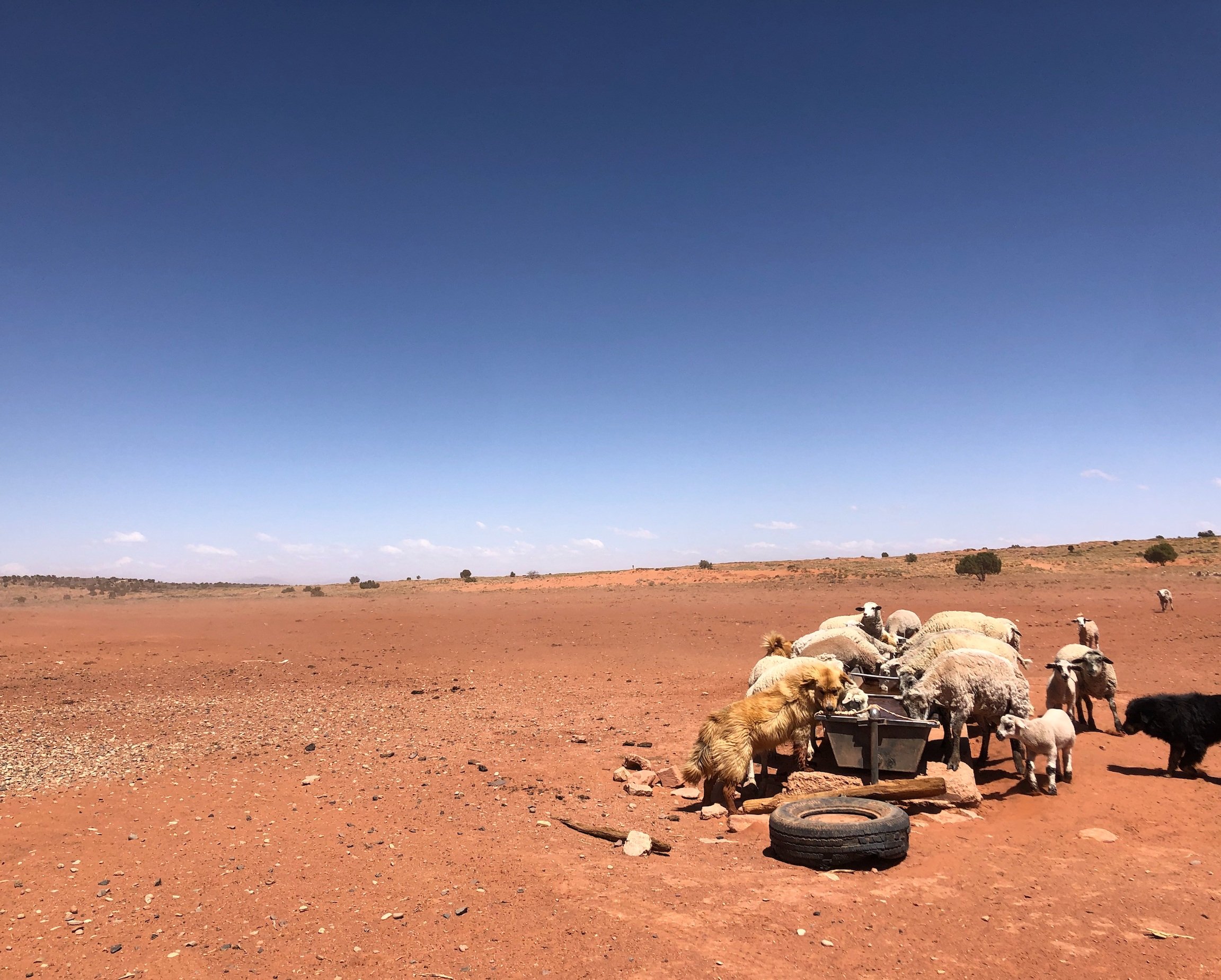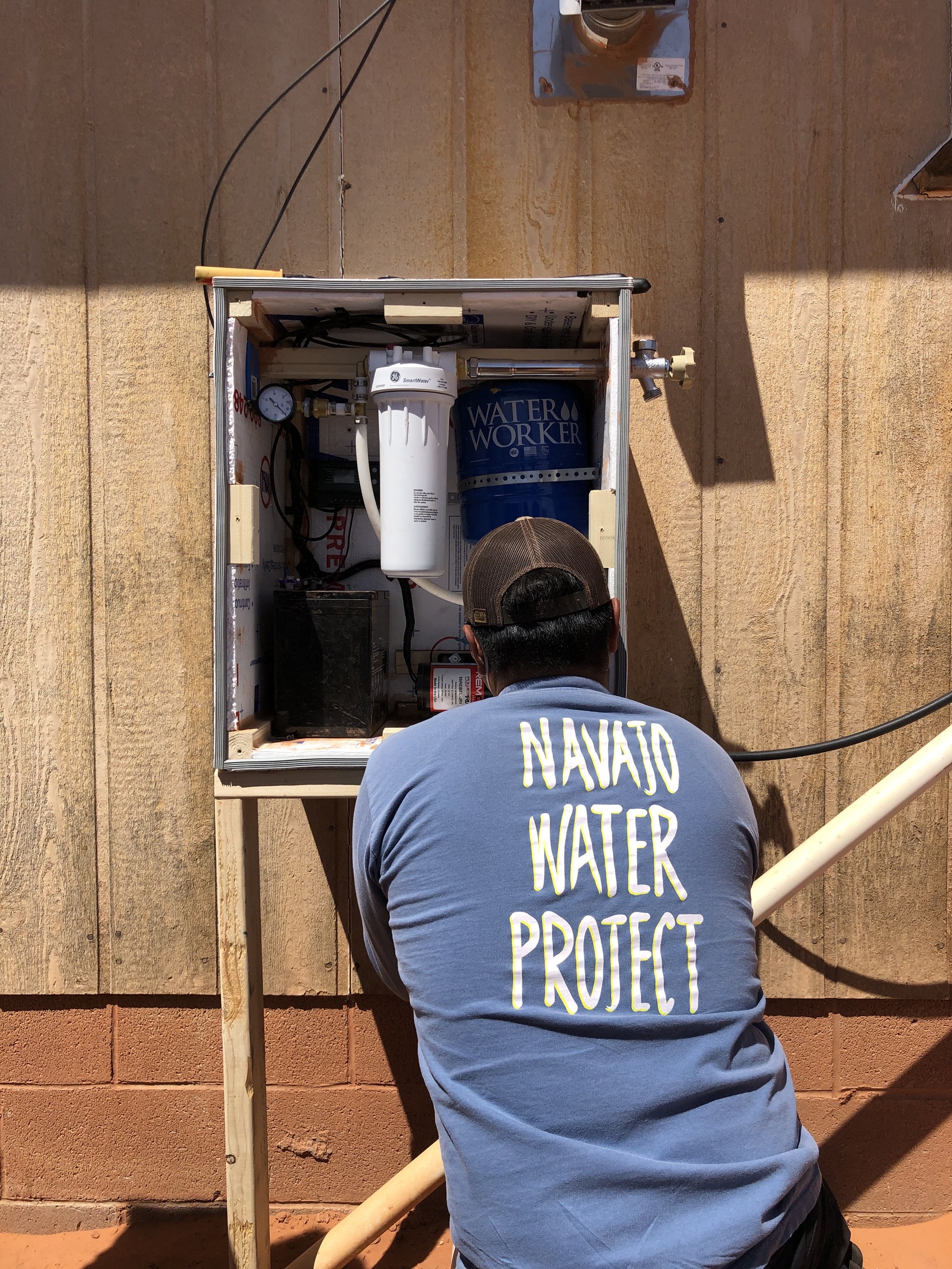
Reimagining home water systems on the Navajo Nation during the COVID-19 Pandemic
How might we design a process for home water installations that centers client and field staff safety during the COVID-19 pandemic?
Collaborators
DigDeep Navajo Water Project Water and Solar Technicians and Project Managers;
Collaborator Katie Janss was instrumental to final project synthesis.
The Navajo Nation and COVID-19
The Navajo Nation is home to Diné people who have lived in concert with land that is now Colorado, New Mexico, and Utah since time immemorial. Due to historical injustices and systematic racism, many communities on the Navajo Nation do not have access to basic sanitation needs.
It is estimated by DigDeep that 30% of the Navajo Nation is without access to potable water or sanitation systems. During the COVID-19 pandemic, the Navajo Nation was one of the hardest hit, surpassing New York at times in COVID case rates with high mortality. As many of us, communities stayed at home to quarantine; on the Navajo Nation many people did not have running water, instead relying on bottled water and family members to bring supplies.
Organizations like DigDeep pivoted to COVID-19 pandemic relief, bringing supplies directly to community members. Prior to the pandemic, DigDeep’s Navajo Water Project was installing off-grid home water systems that consisted of an underground cistern piped indoors and monthly potable water deliveries. By the end of 2020, the Navajo Water Project had completely pivoted to delivering emergency water to families in quarantine. DigDeep needed to maintain these efforts while also being committed to installing more robust water systems in community member’s homes, DigDeep sought to develop a process for installing home water systems on the Navajo Nation during the ongoing pandemic.
A diagram of the DigDeep Home Water System (HWS)
We sought to understand how staff were impacted by the pandemic at home and in the field.
The Navajo Water Project (NWP) team wanted to understand the impact of the pandemic on staff, in-home water system installations, and what the future of field work would look like.
As project lead of this process, I first sought to understand people’s current experiences in the pandemic and what made people feel unsafe. Recognizing the personal significance of the pandemic on NWP staff, I conducted focus groups and interviews with project managers and their teams to better understand their needs, concerns, and ideas for moving forward. I wanted to first understand the team’s experiences in the pandemic both at home and at work as well as team members perceptions of and relationship to going inside peoples homes.
It was important for me to understand that talking about loss and death can be a very personal and challenging topic. As a bilagáana (white person) in an Indigenous space, this was even more important to recognize and understand when discussing the pandemic with my coworkers. I deferred to project managers and elders in the group.
Throughout these conversations some staff disclosed their very personal experiences with losing family and co-workers. Staff echoed the heartbreak and hardship that had affected their communities and created a lot of fear towards ever returning to work inside homes. However, staff were also committed to serving their communities and showing up during this challenging time.
After holding three focus groups and multiple interviews with project managers, two themes emerged: 1) the importance of prioritizing the health and safety of both staff and clients in order for staff to feel comfortable returning to work and 2) the innovative capacity of the NWP team to find alternative ways of delivering a service to their communities.
Through interviews, focus groups, and brainstorming sessions, we found a way forward.
Below are artifacts from the project including interview questions, a project timeline, interview synthesis, and findings.
Click on the images to see the full artifact!
Interview Questions
Interview Synthesis
Findings and Recommendations
Design Challenge Overview and Timeline
Focus Group feedback and brainstorming
Impact
This process helped the NWP team steer the direction of work, acceptable risks, safety procedures, and any aspect of resuming pre-COVID work home installs. The research findings also helped communicate to leadership at DigDeep the impact the pandemic was having on their staff and how to best support them. Two DigDeep Tasks forces were created: the Innovation Task Force focused on redesigning the way water systems were built, and the Health and Safety Task Force, focused on creating protocols for safe operations.
Building upon the insights gathered through focus groups and interviews, the team engaged in brainstorming and rapid prototyping sessions. Through collaborative efforts, they developed an effective work-around solution to avoid installing water systems inside clients' homes, but instead created an outside water system that could be installed at a distance
Role
As lead of the project, I facilitated and conducted focus groups and interviews, created design briefs, and shared findings with leadership. I later led brainstorming and ideation sessions with team members to develop an alternative water system.








